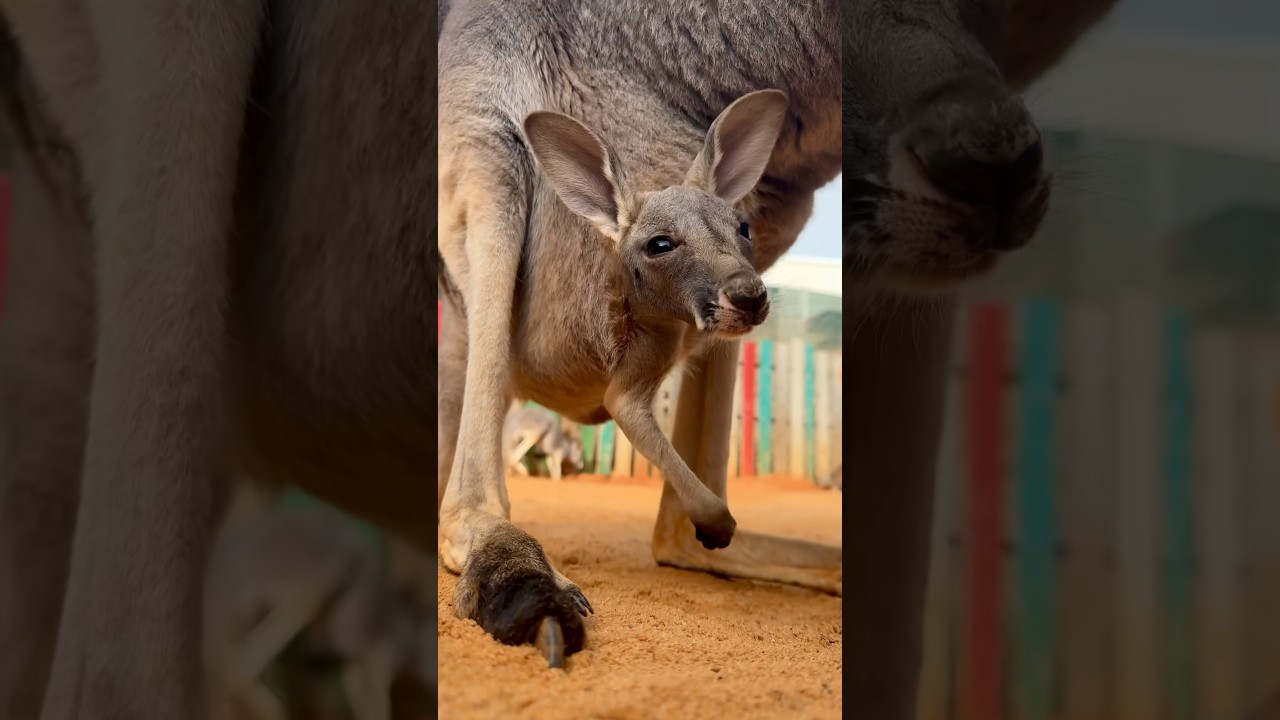– Introduction to Ozzy, the baby kangaroo, and its significance in wildlife education.
– Details on the biology and natural habitat of kangaroos.
– The role of zoos in wildlife conservation and public education.
– Challenges facing kangaroo populations and conservation efforts.
– How can the public support kangaroo conservation and wildlife preservation?
Recently, Animal World has been thrilled to introduce Ozzy, a delightful baby kangaroo that has captured hearts worldwide. Ozzy’s story brings joy and is an important conduit for wildlife education. The discussion around Ozzy opens the door to a broader understanding of kangaroo biology, the challenges these animals face in the wild, and the critical role conservation efforts play in their survival.
Kangaroos, native to Australia, are marsupials—mammals characterized by carrying and nursing their young in a pouch. This fascinating breeding method is one of the key features that draws interest and curiosity toward kangaroos. Young kangaroos, or joeys, like Ozzy, are born undeveloped and continue to grow and develop inside their mother’s pouch before venturing into the world. Kangaroos are also known for their powerful hind legs, which allow them to travel at high speeds and cover great distances in search of food and water. Their adaptability to various habitats across Australia, from forests and woodland areas to grasslands, showcases the versatility of these remarkable creatures.
Zoos play a pivotal role in wildlife conservation, including educating the public about kangaroos. By featuring animals like Ozzy, zoos provide a unique opportunity for visitors to learn about wildlife’s life cycles, behaviors, and challenges. They also underscore the importance of habitat preservation, research, and conservation efforts necessary to ensure these species thrive for generations. Additionally, breeding programs coordinated by zoos are vital for maintaining genetically diverse populations and can be crucial in recovering endangered species.
Despite their wide range and adaptability, kangaroo populations are not without challenges. Habitat loss, climate change, and human-related activities such as vehicle collisions threaten their survival. Conservation efforts are therefore essential in addressing these challenges, encompassing habitat restoration, protective legislation, and initiatives that mitigate the impact of human activity on kangaroo populations. Education and public awareness campaigns, often spearheaded by zoos and conservation organizations, are crucial in mobilizing community support for these efforts.
The public plays a crucial role in kangaroo conservation and the preservation of wildlife at large. Actions such as supporting wildlife conservation organizations, advocating for protective legislation, and adopting sustainable practices that reduce environmental impact can all contribute to the well-being of kangaroos and other species. Moreover, by visiting zoos and participating in educational programs, individuals can deepen their understanding and appreciation of wildlife, fostering a stronger connection to the natural world and a commitment to its preservation.
In the case of Ozzy, the baby kangaroo, every mention and story shared serves as a touchpoint for these broader conversations. Ozzy’s presence in the public eye not only offers a glimpse into the captivating world of kangaroos but also highlights the interconnectedness of humans with the natural environment. By learning about and engaging with stories like Ozzy’s, individuals can gain insights into the valuable work done by zoos and conservationists and understand their role in supporting these endeavors.
As awareness grows and actions are taken, the hope for kangaroo populations and biodiversity brightens. Education, conservation, and community support form the pillars of efforts to ensure species’ survival like kangaroos. Stories like Ozzy’s remind us of the beauty and fragility of the natural world and the responsibility we share in its stewardship. Through continued learning and active participation in conservation, future generations can look forward to a world where kangaroos and other wildlife continue to thrive.
*****
Source Description

